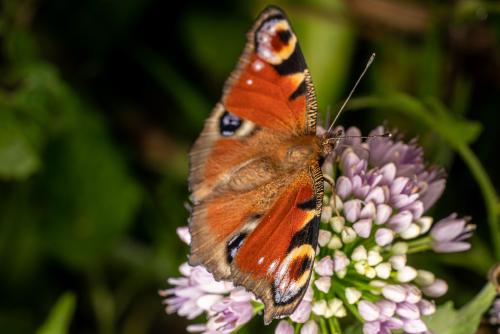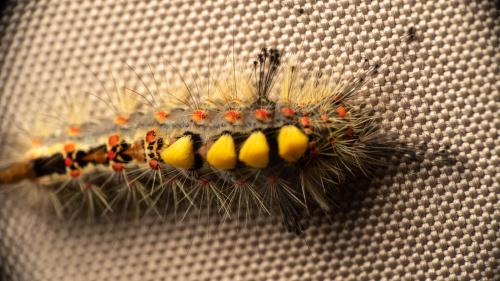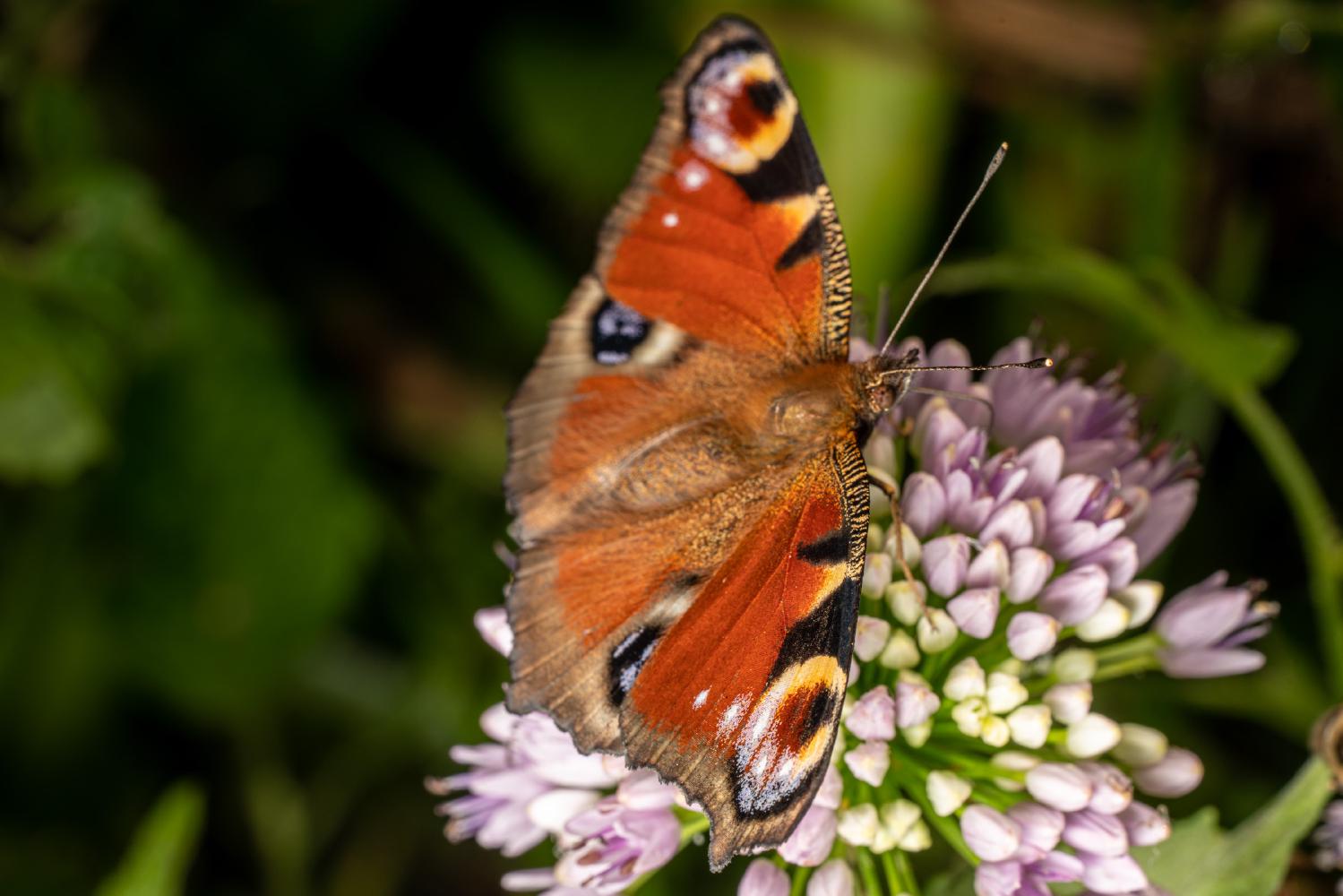Metamorphosis
Amid the diverse activities of life on our planet, the ability to change is one of the most fascinating phenomena. Sometimes it is a courageous step, sometimes it is simply necessary. It offers not only the opportunity to adapt but also to completely reinvent oneself. Among the many creatures that populate our earth, there are some whose lives are characterized by profound transformations. I, Flora, the peacock butterfly, would like to tell you about my journey — a story of the different phases of my existence.

My path began hidden, on the underside of a leaf, in a tiny green egg decorated with several fine vertical ribs. I lay, in this form, with over a hundred of my siblings on a plant carefully chosen by our mother: sunny or semi-shady, humid and sheltered from the wind. Sometimes several mothers decide to place their hopes on the same leaf — then it can quickly become a bit crowded.
After two to three weeks of tense anticipation, during which my world was no bigger than a millimeter, I broke through into reality as a caterpillar. I didn’t have time to marvel at the world around me, because right from the start it was all about survival. My skin was still thin and had a white-greenish sheen. I formed a community with my siblings, connected by life in the web. This web was our first bulwark against the lurking dangers. Unfortunately, I was still often afraid. I had heard terrible stories — for example about the black slip wasp, which is very dangerous for us butterflies in all our stages. Eager ant colonies also pose an everyday threat, tracking down our cocoons and mercilessly destroying them to get at their desired food. These voracious insects can decimate entire populations of caterpillars before they even have a chance to pupate. From above, predatory birds such as the blue tit or green woodpecker pose a constant threat. Their sharp eyes and quick beaks make them feared hunters in our habitats. My siblings and I often had to hide in the darkest corners and hope to remain undetected.
Food was rarely a pleasure for me, instead an act of tireless devotion, because caterpillars have to eat incredible amounts to prepare for their further development. With each molt, which first started after just a few days of joint effort, I left a version of myself behind. I went through four molts in total and after each one, I looked slightly different. Our web became a gray-brown cocoon that covered the plant that nourished us. After three to four weeks of growing, changing, and migrating in search of new food, I reached my final caterpillar form: deep black with distinctive white spots.
This marked the beginning of the next phase of my existence. I looked for a dried stem to pupate — the actual metamorphosis began. Spinning some white threads created a practical base for me; I quickly clung to it. My chrysalis shell, at first a vivid green, turned brown, adorned with two rows of shiny spines and metal-colored spots. In this silence, caught between worlds, I waited. The time felt so incredibly long that in the end I no longer knew who “I” actually was. Because a doll decomposes and dissolves completely, except for a few cells. Only this “near-death” makes metamorphosis possible. Time began to stretch and twist, every moment became an eternity in which I became increasingly alienated from my previous existence. Thoughts blurred into a diffuse fog, each memory of my previous existence was overlaid by a feeling of indeterminacy and nothingness. When the wait was over and the time was finally right, the slightly transparent shell revealed the outline of my form more and more clearly. With great effort, I freed myself from this last restriction and emerged into the light as a peacock butterfly. My wings, initially limp, filled with blood and air until they were strong enough to finally carry me into my new life.
This journey from hiding to unveiling, from the inconspicuous to the beautiful, is the story that shaped me. Some butterfly species already reach their full potential as caterpillars, they are colorful, fascinating, and different — like the caterpillar of the striking rusty tussock moth. My path was somewhat more modest, but perhaps this very modesty conceals the potential for an astonishing development. I realize that some amateur gardeners would prefer not to have caterpillars in their gardens, but if you want a pretty, fluttering peacock butterfly, you simply have no choice.

I hope I have been able to show how important change is, even if it causes fear and uncertainty. Stepping into the unknown requires courage. But the decision to set out is often the only way to grow.
